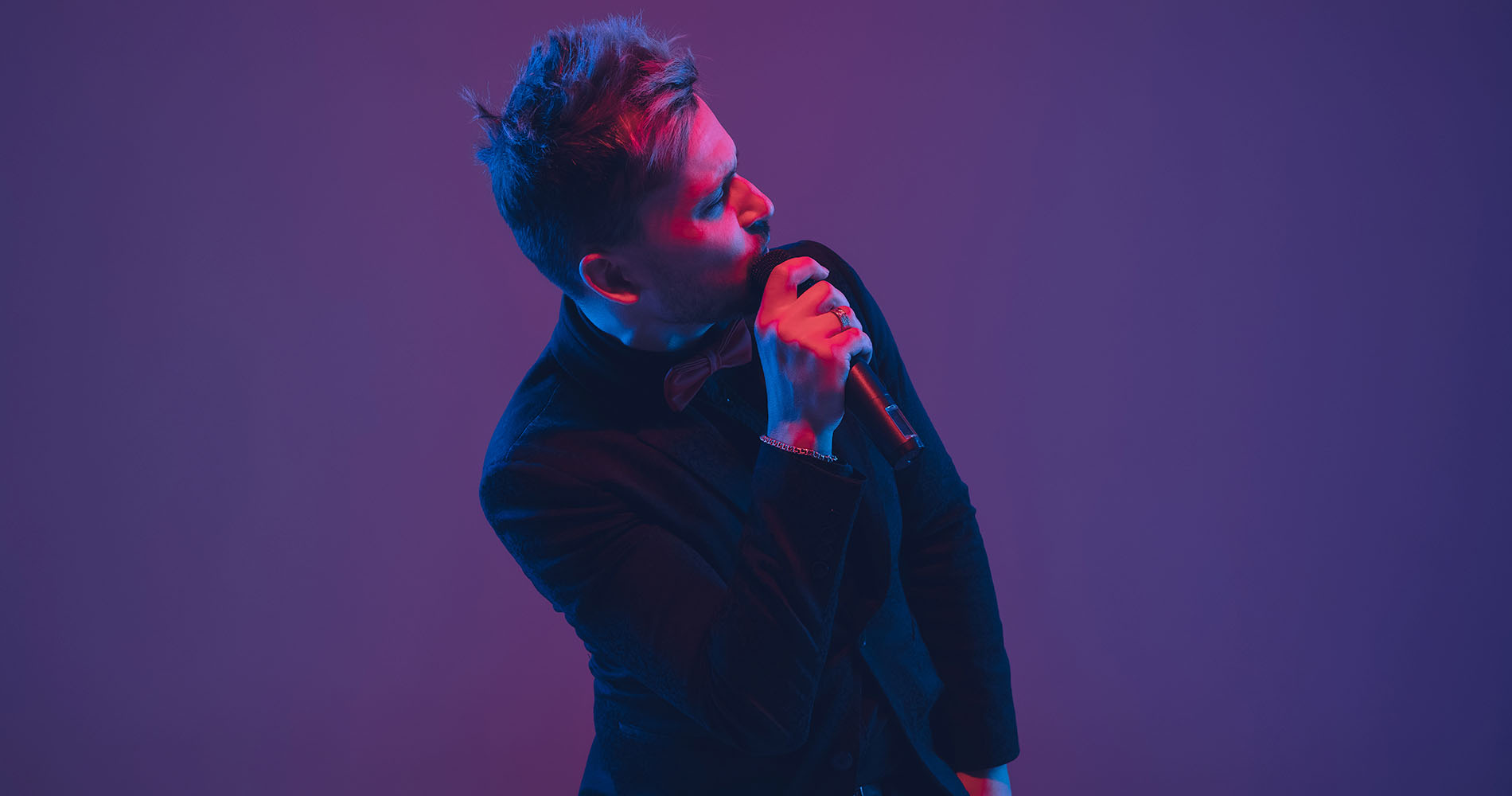Mes: mayo 2016
Página: 2
We had some truly stellar photos come out of our photographers this week, as they attended shows from Vance Joy, Ball Park Music, Matt Corby and Groovin The Moo sideshows, with the common theme being some amazing light shows. As Forbes notes, in the missive, Sixx and bandmates James Michael and DJ Ashba implore YouTube to work harder to protect the rights of artists whose work frequently appears on the platform without proper payment, clearance or copyright, noting their own positions of privilege as successful musicians — and wanting to use that advantage for the benefit of smaller acts, in keeping with their history of artist advocacy. «We recently completed our fourth album called Prayers For The Damned, in our singer/producer James Michael’s recording studio,» the band began. «We are a lucky band, grateful to have all had success prior to the creation of Sixx:A.M. Music expresses that which cannot be put into words and that which cannot remain silent. «Nikki came from Mötley Crüe, DJ played guitar in Guns N’ Roses for the past six years and James has had a successful career as a writer and producer. Releasing an album and being part of a tour going on sale allows us to use the promoters’ marketing money to create a larger platform to get our message out, and having a record company that generates publicity gives us an opportunity to speak up about issues we think are important — specifically the crisis with the music business and YouTube.» The band go on to recall the occasion on which they backed Taylor Swift «when she spoke up about the absence of royalty payments to artists by Apple Music», as well as explaining that the band has «long been an advocate for new artists», as evidenced by Sixx’s predilection for featuring emerging acts on his radio show, before taking aim at Google (and its founders, Larry Page and Sergey Brin) for its payment strategies through the framework of comparing its annual revenue to that of the global music industry.
Nightlife in Copenhagen is set for a heavy blow as one of the city’s main clubs, Culture Box, will lose a substantial amount of funding from 2017. Since 2005, the Danish government has provided the club with €240,000 (1,800,000 Danish kroner) per year, but that’ll end at the end of 2016. The club describes the planned cancellation of funding as a «very hard blow» as the money goes towards bookings and maintaining facilities. The press release also reads: «We are shocked that The State of Denmark has decided to remove the cultural support for the venue, and by that the support for electronic music culture.» Some people have lives; some people have music. House and techno has had a heavy presence at the club since it opened, with the likes of Moritz von Oswald, Ellen Allien, DJ Koze and Nina Kraviz all playing.
San Bernardino County Supervisor Janice Rutherford said Tuesday she will place an item on the May 24 board agenda calling for an end to rave-style events at the San Manuel Amphiteater in Devore. Rutherford’s decision came amid continued and growing complaints from Devore and Crestline residents about excessive noise generated from electronic dance shows at the venue, mainly the Nocturnal Wonderland and Beyond Wonderland electronic dance shows, until the wee hours. Residents said the music is so loud it causes their windows to rattle and their walls to vibrate. In addition to the noise, the concerts draw heavy traffic that traps residents in their homes and is a magnet for rampant drug use and drug sales, overdose deaths and public indecency, residents say. During an April 5 board meeting, Rutherford said dozens, if not hundreds, of residents have complained about the shows since they began at San Manuel Amphitheater in 2013, when the county entered into its contract with Live Nation Worldwide. The dance shows were previously held at the National Orange Show Events Center in San Bernardino, but continued complaints of a similar nature from residents and business owners forced their relocation. During the April 5 Board of Supervisors meeting, Rutherford asked County Counsel Jean-Rene Basle how best to invoke the provision of the county’s contract with Live Nation allowing the county to terminate the contract should the dance shows become a public safety hazard or are subject to resident complaints due to noise or other nuisance behavior. Basle suggested that Rutherford put it before the board for a vote.
Like any music, jazz has its revolutions; its sudden incidents in infrastructure; its disruptive presences of unprecedented sound. Mostly it’s slower than that, though, with years and generations of accretions before it seems to call for new vocabulary. That’s one way to look at Winter Rockfest, whose latest incarnation occupied a dozen or so venues in downtown New York City last weekend. In a decade and a half of steady growth, a one-night showcase oriented toward industry insiders has become nearly a weeklong landmark of the city’s cultural calendar. Without deviation from the norm, progress is not possible. Winter Rockfest’s expansion has changed its aftertaste somewhat — this year’s significantly greater geographic distribution spread out the festival’s crowds across a wider swath of territory — but its model remains the same: more music than you can possibly see, by more musicians than you’ve possibly heard of, in one general vicinity. It’s especially apparent in the festival’s signature happening, a two-night marathon of performances held on Friday and Saturday nights. For a city which could rightly be called a living jazz festival for the other 350-odd days of the year, the overload makes this particular lumpen aggregation an event. Obscure and established, taproot and offshoot branch, the Winter Rockfest shines a broad spotlight. To represent that big tent, we asked several regular festivalgoers to pick one performance from the marathon that stuck with them. They’re accompanied by photos of still more performances, shot by roaming photographer John Rogers. Here’s what we took in at this year’s festival.
At 9 p.m. on a Friday in February, Watson was standing outside of La Casa, a micro-church and community center — whose main chapel is the size of your parents’ spacious living room — nestled next to a tienda in Washington, D.C.’s Mount Pleasant neighborhood. Inside, a hardcore punk band called Unknown Threat had just taken the stage. Of course, there was no actual stage. There was just the floor where the band set up at one end of the room, and the dozens of fans in attendance who stood everywhere the band wasn’t and this is more or less what punk looks like. Once Unknown Threat hit its stride a few songs into its set, those standing closest to the band churned into motion, ricocheting off of one another and swinging arms wildly, seemingly unconcerned whether friend or foe caught a fist to the face. But to Watson, who has performed in bands and booked shows in D.C. for years, the city’s punk scene, at this moment, feels complacent. He says he has watched the scene he helped build lose urgency, at least at home. Looking at it from the outside, 2015 was a banner year for D.C’s storied punk scene, which first rose to prominence in the early 1980s and has become an on-again, off-again fixture in the local music ecosystem. But at no point since those heady days of Bad Brains and Minor Threat has the local product been so talented, prolific and diverse. After years of being a primarily local concern, D.C. punk matters to the wider underground music world once again. But that’s the rub, Watson says. D.C.’s punk scene broke nationally last year, with multiple bands releasing well-received albums, joining major tours and crossing international borders to play for punk contingencies abroad. More than a half-dozen new wave D.C. hardcore bands released albums or EPs last year, including scene stalwarts Pure Disgust, Red Death and Protester. Those three bands also toured the U.S. at various times, while Protester spent a week in Mexico in December. But while established bands rose in prominence as they performed around the country, some within the scene grew frustrated as momentum and enthusiasm at home lagged. When those established bands played gigs within the city limits, fans oftentimes stood with arms crossed and nodded along — not the ideal reaction to a genre that often inspires a hail of spin-kicks and stage dives from its audience. «We just assumed it’s because everyone is in the same bands. For most people it’s like, if I’ve seen one, I’ve seen it all,» Watson says. «We played lackluster shows, attendance was low. People weren’t having a lot of fun.»
Price, 57, has played music nearly her whole life, starting with piano when she was five years old. But in the fall of 2009, the guitar was still something of mystery to her. She had been playing for only a couple of months and was struggling a bit with the new challenges. Yet, instead of holing up in her living room to practice until she felt more confident, she did something totally unexpected: she packed up her guitar and sheet music, headed into downtown Los Angeles, and set up outdoors to work through the new techniques. Twice a year, Active Arts, a series of programs run by the Music Center in Los Angeles, invites recreational musicians to the arts center’s campus for a 30-minute outdoor practice session called Public Practice. There are no rules about what participants can and cannot play, and mistakes are more than welcome. “I looked at it as a way to make the time to practice, because I’m always so busy,” explains Price, a legal secretary. Having participated in Public Practice three times, she’s found that bringing her music outdoors helps her focus. “Playing out in public encourages me to approach things a little bit differently. Even though it’s not a performance, knowing that I might have observers helps me to organize my practice session,” she says. On the other hand, Eric Oto, a saxophonist and two-time participant, has occasionally found himself sidetracked during outdoor sessions–but in a good way. “The acoustics were so fascinating that I ended up, for a little while, just strolling around the campus plaza listening for different sounds,” says the 48-year-old lawyer. “Hearing the sounds bouncing off of the granite, concrete, and everything else outside was really interesting, and it got me to think a lot more about sound production, rather than just technique.”
We are the music makers, and we are the dreamers of dreams. [qtgallery id=»458″] What is that secret age-old productivity tool? Music. Yep. The right music can help you stay focused and more productive. Here’s how: Music Helps Boost Productivity on Repetitive Tasks Research has shown that when presented with repetitive tasks, music can help make those tasks more enjoyable and boost productivity. In this study, for instance, assembly line workers reported feeling happier and experiencing higher efficiency while listening to music. Studies suggest that this is because music helps boost mood and therefore contributes to productivity. One study from Canadian researchers looked at this concept. What they found was that time-on-task was shorter — which means they got the work done quicker — and the quality of work performed was better when music was playing. Not only did those listening to music complete tasks faster, but they also came up with better, more creative ideas when the music was on. This concept of mood can be further explained. Listening to music at your desk can help drown out other distracting noises like chatting coworkers, the buzz of the copy machine, and the clicks of other people typing around you. Placing earbuds in your ears to drown all that noise out — or even having music play over the office’s speakers — creates a more consistent and enjoyable environment that makes you feel more comfortable and relaxed in the space. The New York Times further suggests that melodic tunes promote the release of dopamine, a feel-good chemical in the brain, which also contributes to that good mood and promotes a more productive working environment. All of this suggests that music may be a valuable tool in boosting efficiency when performing mundane tasks, such as data entry or answering emails. Some suggest that when trying to focus on a complex task, music can be distracting – just as a noisy office may distract workers. But that doesn’t mean all music is bad for creative tasks. It’s just that the same type of music may not be appropriate in both situations. In fact, studies show that moderate levels of ambient noise can boost creativity, so you have to be conscious of what type of music is playing, and select it based on the task at hand.
The line-up for the industrial, EBM and synthpop festival E-tropolis in Turbinenhalle in Oberhausen, Ruhr, on March 28 is complete. For the most part, though, people just happening to pass by the two-block campus during Public Practice sessions are at the best advantage to enjoy the notes in the air, mixing with the environment. “We organize it so that several musicians are playing concurrently, in different areas of the campus,” explains Ming Ng, director of Active Arts. “So, there is a ‘soundscape’ that is created as you walk from one musician to another.” Like exhibits in a museum, the participating musicians are set up with signs next to them, explaining who they are and what they are doing. Once in a while, people will stop to listen or to ask the musicians a quick question, but some don’t quite know what to make of the situation. “One man tried to drop a dollar into my saxophone case,” Oto recalls with a laugh. Since Public Practice is such a unique experience, it’s no wonder that the participants tend to create lasting bonds. The relationships begin outdoors on the Music Center campus, when one musician might stroll up to another to sight-read through some duos. At the end of the project everyone takes part in a group dinner and discussion, and the relationships often extend far beyond that day. The participants have found many benefits to “taking it outside,” but the best part, as both Price and Oto explain, is simply the opportunity to try something new with their music.
Track appears in new box set… A new box set showcasing recordings Captain Beefheart made in the early Seventies is due for release. After silence, that which comes nearest to expressing the inexpressible is music. Sun Zoom Spark: 1970 To 1972 features newly remastered versions of three albums that Beefheart and the Magic Band released during that period – Lick My Decals Off, Baby, The Spotlight Kid and Clear Spot – as well as an extra disc of alternate versions. Scroll down to hear a previously unreleased take of the track, “Little Scratch“, which appears on the fourth disc of outtakes. Long-time Magic Band guitarist Moris Tepper, first met Beefheart [aka Don Van Vliet] at the Troubadour in Los Angeles during the Clear Spot tour. He stayed in the band until 1982. Speaking to Uncut, Tepper reveals that aside from the alternative versions that appear on Sun Zoom Spark, there is also a trove of unreleased Beefheart material. “I can name a dozen songs right now that I wanted to record with him but which never got recorded,” says Tepper. “They exist maybe more as poems than as songs. He had music for a song called ‘Your Love Brought Me To Life’, I think it was published in a book in Germany. We had worked on a song called ‘Child Ecologist‘ which was another symphony. He’d done something before I ever met him called ‘Big Sur Suite’ which was an incredibly beautiful piece of music, this huge, thematic, movie kind of theme and gorgeous words. He probably had more unrecorded, undocumented works than recorded works. He’s an artist.
The public service broadcaster is selling off its catalogue in June. Radio France has revealed details of over 8,000 vinyl records set to be sold at a public auction. The records are all double copies of music from the station’s 1.6 million-strong collection. Organised across 10 categories, the records span French pop from Serge Gainsbourg, art-rock from The Velvet Underground, afrobeat from Fela Kuti, synthpop from Yellow Magic Orchestra, plus soundtracks, musique concrete and more. There are some rarities too, like a 7″ copy of Syd Barrett’s ‘Octopus’ valued at between €6000 and €7500, as RA points out. The public auction takes place at Maison de la Radio on June 19. The profits will be used to fund new acquisitions and to support Radio France’s digitization project. Browse the auction sale catalogue. [qtgallery id=»454″]
 Adorain Radio
Adorain Radio 










